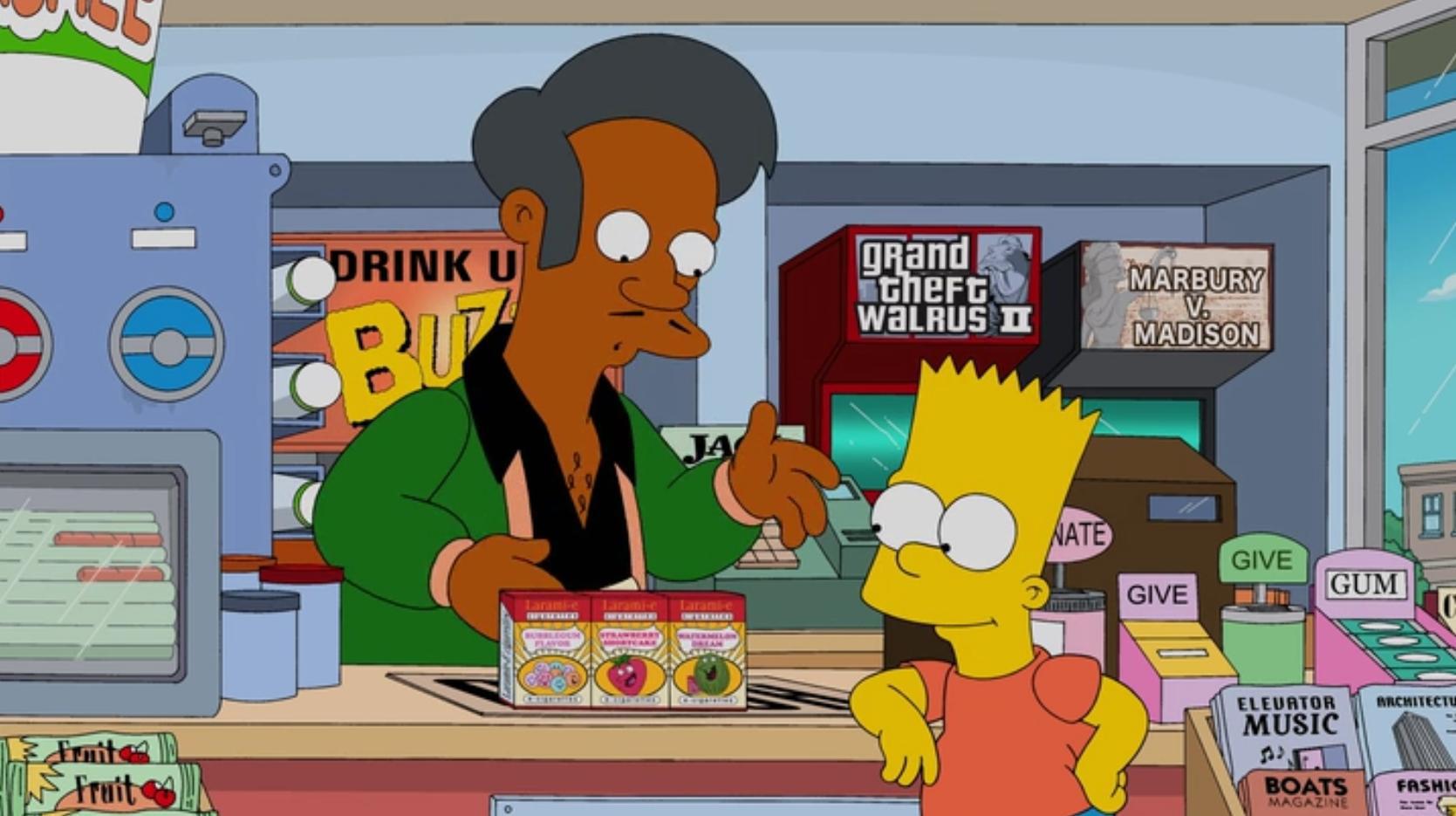As an almost permanent fixture of primetime TV for 28 years, The Simpsons has become an integral part of our cultural landscape. But there’s an intrinsic problem with this most beloved of cartoons, the subject of which is explored in comedian Hari Kondabolu’s new documentary, The Problem with Apu. Although he loves The Simpsons, the caricature of a pot-bellied, Indian convenience store owner dogged Kondabolu’s life; as a childhood taunt, it even follows him into heckles in his comedy career. This documentary is a funny, fresh and engaging take on a troubling aspect of one of the world’s most successful and long-running cartoons, and opens up a much-needed dialogue about representation, and when stereotypes become harmful.
What’s surprising, and indeed unsettling, to many people, is that the character of Apu is voiced by a white actor, Hank Azaria, who does many of the other voices on the show. This casts an uncomfortable light on the situation, as many people seem to not know this, and are troubled by the idea of a white guy putting on an Indian accent. The film examines how the character of Apu came about; apparently, he was not even originally intended to feature as a character at all. The character was originally just a store clerk, with one throwaway line, which Azaria later delivered in a broad Indian accent during a read-through. The writers found this hilarious, and thus Apu was born. But the problem is, they were laughing at the accent alone – nothing else, because it fits with their idea of what an Indian is: a store clerk, the guy at the local 7/11, the one who tries to sell you cheap goods at extortionate prices. This is how stereotypes evolve into harmful caricatures; while they may be initially rooted in some element of truth, it is the white man’s limited experience and understanding of what Indians are that the stereotype is built on, and then pushed to the extreme of mocking and minstrelsy. The character himself is flat and one-dimensional, but this doesn’t matter to the writers: it’s what mainstream, white audiences find funny.
The problem with Apu is that for a long time, he was one of the only representations of South Asians in mainstream media, and he seemed to embody every single negative characteristic associated with them. For any South Asian struggling to see themselves represented onscreen, it’s hard to be grateful for such portrayals, especially when they’re being levelled at us on the street. In the film, Kondabolu talks to a group of South Asian comedians including Hasan Minhaj, Aparna Nancherla and Aziz Ansari, all of whom confess to hearing Apu referenced by their childhood bullies. The danger of stereotypes comes when they’re being used to target already marginalised groups, and start to harm real people every day.
The film also raises the question of when stereotypes are okay: is it acceptable for South Asians to put on the accent or rely on stereotypes themselves? Views about this differ across the board, with some claiming it’s fine if you do it well, while others are more hesitant to use it. It’s not necessarily the accent itself that’s the problem, but more how it’s used – if the punchline is the accent itself, or if it could garner laughs from racists, the joke deserves a second thought, but if the joke has something new to say and is clever about how it operates, then it might be worth considering. The bottom line is, relying on the same old tropes and accents, can often feel bland, boring and unoriginal at best, and downright offensive at worst. But does that mean we should retire stereotypes altogether?
I’m not saying all stereotypes should be outlawed – there are a multitude of ways to make them fresh, funny and appealing. However, there is an uncomfortable truth to all stereotypes rooted in race or culture, as they undoubtedly carry with them a dark history of racism, and have contributed to the oppression of minority groups.
It’s very much a case of punching up versus punching down – if you’re stereotyping those with power, a rich white billionaire, for instance, there is very little chance that the stereotype will harm this group of people in a meaningful way. Rich white men have the privilege of being represented in a myriad of ways in the media, and there is no danger that people will take one character as the representative for all rich white men, as they did with Apu. This is illustrated with fantastic irony in the documentary, as it transpires that Hank Azaria refuses to participate in the film because he is worried about how he will be portrayed in the edit. That Azaria has the privilege to choose how he is portrayed on screen is the ultimate slap in the face, and reminds us why we need representation now more than ever. To combat stereotypes, we need to be able to tell our own stories.
Ananya Sriram

